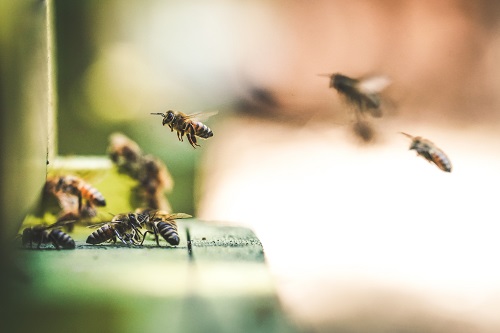12 Plants That Can Grow Without Much Sunlight
Living in a space that receives the minimum amount of sunlight and still wishing to liven it up by adding greens is a thoughtful process. Also, adding a plant to your workstation is so much refreshing for your thought process, anxiety, and so many other issues. And let’s not forget the purified air these plants give us. But the reality is that most spaces don’t get enough sunlight. So you decide against keeping a plant because you don’t want it to die and feel sorry for not being able to provide it with the rightmost care like ample sunlight.
Plants need sunlight to grow (photosynthesis). Period!
The silver lining in this situation is the plants that can do great without much light or they can thrive in indirect fluorescent light. In fact, these plants prefer shade as the full sun can damage their foliage or dry them up so much that it becomes difficult for them to survive.
So here is a list of 12 breathtakingly beautiful indoor plants that can grow without much sunlight. In this extensive guide, we will give you details of plants, how to grow them well, and tell you whether they are toxic or not.
Parlor Palm
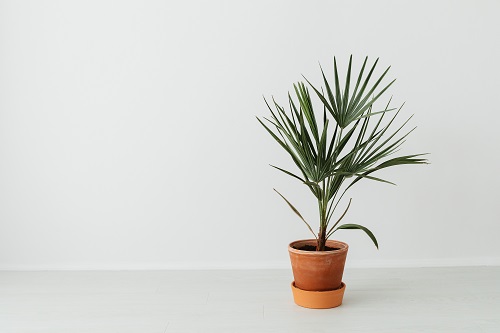
Parlor palm tops our list of plants that thrive well without sunlight. With lush green foliage, these are some of the most popular palms to be grown indoors. But if you want it to bloom (little yellow blooms that appear very occasionally), then you need to provide it with partial sunlight. They can grow to be 4 feet tall, but the ones that are doing very well with proper care can grow to be 8 feet tall. Provide it with high humidity and indirect light and it will be a happy plant. Known for their air-purifying quality, these are non-toxic for animals.
Do you always wonder if indoor palms are toxic to cats and dogs? Check which palms are harmful and which are not.
Dracaena
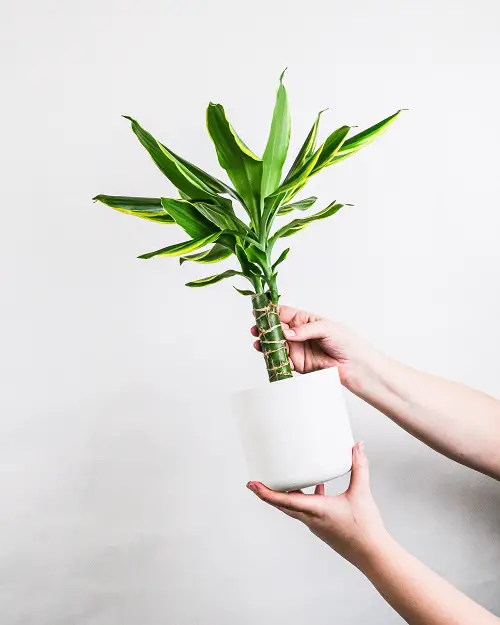
Another plant that makes it to our list of “less sunlight surviving plants” is the Dracaena. Also known as the happy plant, this can be grown outdoors as well but in complete shade. They prefer warmer areas with well-drained but moist soil to grow. It is not necessary to move them from their current location unless it is absolutely required, as it has become their home. With attractive long leaves that grow on the woody stem, they can reach up to the height of 2-10 feet tall. It is a generally safe plant to grow with kids around the house but can turn out to be mildly toxic for cats and dogs.
Snake Plant

Known best for its intriguing looks (the sword-like silvery leaves that grow upright), the snake plant is proven to be the best air purifier for your indoors. And you know what, this plant is least bothered if you forget to give it water for a long period. Just give them bright but indirect light, warm temperatures and they will be happy. The hitch; they are poisonous if ingested. So if you want to keep them in your home or office and have small kids or pets, then we suggest that you keep them at an unreachable spot. They can be 1- 4 feet high.
If you are new to the world of plant propagation, here’s a great article on plants that can propagate easily and help you save money.
Lucky Bamboo
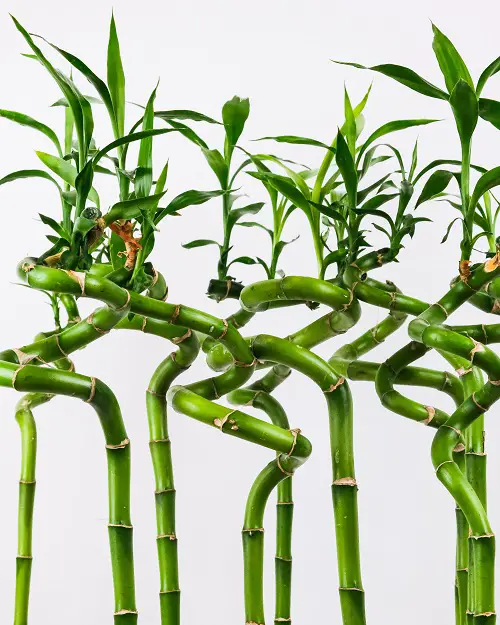
Another great-looking indoor plant that can thrive well without much sunlight. However, we are not completely implying that it hates sunlight. This plant can grow up to an inch a month if the care conditions are right. Thriving best at high humidity levels, your aesthetically pleasing plant can be toxic to your pets. You can place it in a large clear vase with only water on your foyer table to a have style statement. The bamboo can be curled or braided by professionals for extra oomph.
Fact: Lucky bamboo belongs to the lily family and is not bamboo.
Spider Plant
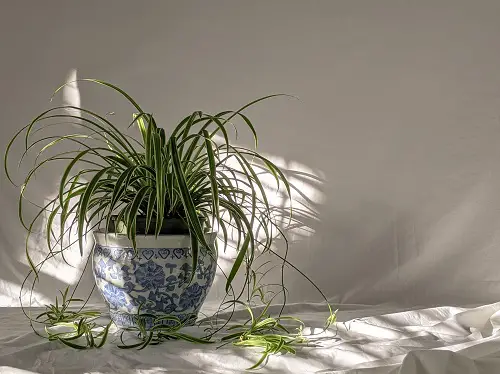
With its easy-going and forgiving ways, the spider plant is one of the favorite plants to grow indoors. This plant can reward you with a cluster of white flowers that mature to form babies which you could easily propagate. They are the best plants for beginners and can look beautiful when grown in hanging baskets and can grow to 2 to 3 feet tall. Provide them with well-drained soil and indirect light and they will flourish best. Spider plant is a good air purifier and humidifier that can clean your office or home air for you. The long narrow and draping leaves of this plant form a beautiful rosette. Place it on a center table in the living room or on your workstation to enjoy the calm it brings to your mind. These palms are completely non-toxic plants and safe to keep in a house that has pets or small children.
Calathea
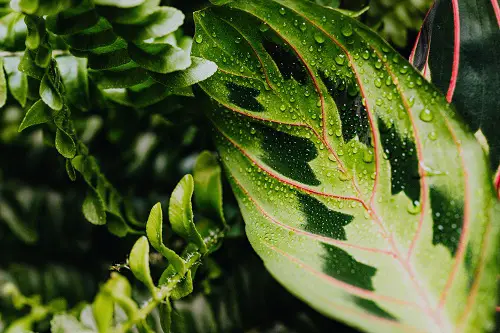
These are flowering plants that are commonly called prayer-plants. Calathea can thrive on minimum to bright indirect light. Bright direct sunlight can take away the beautiful colors of the leaves and prolonged exposure can eventually burn them. Calathea can be best grown in well-drained but moist soil since overwatering can cause the yellowing of leaves. Using tap water might be cumbersome for the plant as it contains salt and chlorine which are damaging for the leaves, turning them brown. We have good news for pet lovers as these plants are completely harmless to animals. Calathea has unique patterned foliage and can be categorized as dwarf plants. They grow up to 2 feet high. The one-of-a-kind leaf movement at night makes them more intriguing. They require high humidity levels so use a humidifier or simply a mist spray to boost the humidity levels around it. They do often tend to bloom in the wild but frankly speaking, not when kept indoors.
Bromeliads
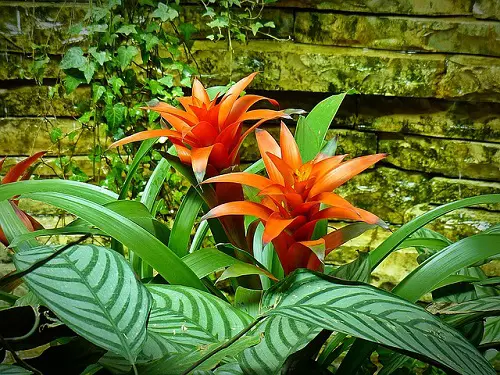
We are allowed to have one favorite, right? Well in that case we pick Bromeliads. Bromeliads with their stunning foliage and even more stunning blooms that come in a variety of hues of reds, pinks, and yellows stand out! The broms (lovingly said) that woo us are usually the ones that grow up to 2m in height and width. These are known as Alcantarea.
There are certain varieties of bromeliads that can take up sunlight but the ones with soft and flexible leaves are best kept indoors with low levels of light provided to them. The ones with stiff leaves can take bright indirect sunlight. Broms can be grown indoors as well as outdoors. Just know that they don’t like cold and frost. So provide them with milder climatic conditions. Bromeliads might be a potential cause for allergic reactions in kids but that can’t be said for all varieties. Otherwise, they are considered non-toxic for humans and pets.
Sword Fern
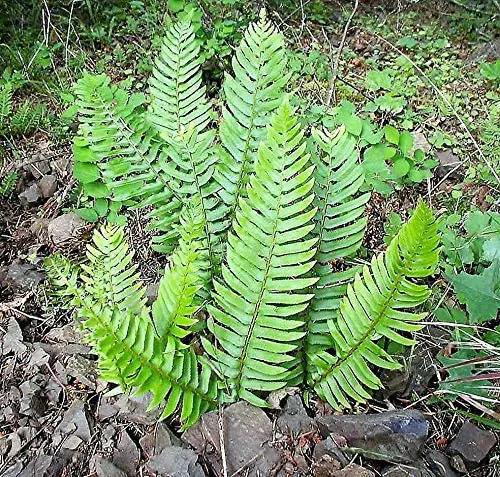
Sword fern is famous for its medicinal values other than its dark green and lush sword-shaped fronds. Great for washing dandruff from hair and treating kin sores, this plant could be your best indoor plant if your side of the house doesn’t face much sunlight because it grows best in light to deep shade. A rich fertile soil that is moist but well-drained is what this plant requires. What’s even more wonderful is that it is an evergreen plant. This fern can reach up to a height ranging from 1 foot to almost 6. Well, to say that sword fern grows quickly is an understatement. In about six months it can grow into a mature, adult plant. If the air in your space feels dry, we suggest misting it regularly as it requires high humidity levels to flourish. One of the best natural air purifiers that absorb formaldehyde from the surroundings, we suggest keeping it in your room. Ferns like Boston and Sword ferns are proven to be harmless for pets.
Peace Lily
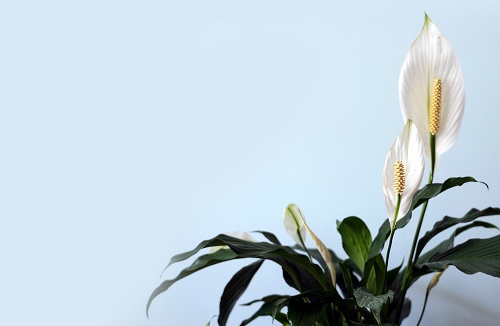
Before we even get started, let’s just take a minute to rave about the beautiful name. And what’s best is that the plant is even more serene than its name. The darkest and richest shade of green leaves encompassing striking, tall white lilies make up Peace Lily.
Studied and proven by NASA to be one of the best natural air purifiers that release oxygen at night and absorb most of the volatile compounds from the air. It also increases the humidity level in the air which is great for your skin, hair, and breathing issues.
This elegant plant needs little to less light and water to thrive. Exposure to bright light can lead to burnt leaves and flowers. Just water them once a week and they are good to go. The best place to keep them is in your bedroom as it eases breathing while sleeping. An average height is between 1 to 4 feet high. But an exceptionally outstanding plant can reach up to 6 feet high and wide.
Maidenhair Fern
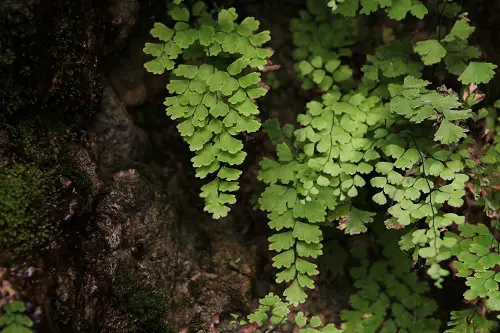
When it comes to naturally occurring plants, maidenhair fern thrives near waterfalls or rock walls, where their love for water and moisture is nurtured. Start your care with the moist soil for your maidenhair fern. Water them every day to make sure that the soil remains moist and don’t allow it to get dry as these are the thirstiest indoor plants. It’s also one of those indoor plants that thrive well without sunlight. Just makes sure that you provide it with indirect light to prevent the fronds from becoming yellow. Since this plant loves humidity so much, we suggest placing the pot on a water-filled tray with pebbles or misting it regularly.
To be honest maidenhair fern is a high maintenance plant that won’t compromise on any of its care routines but once you get the hang of it, it will reward you with gorgeous lush foliage. Grow it in a terrarium environment and it will be an aesthetic focal point of your indoor space. Maidenhair fern is considered non-toxic for pets like all ferns. These plants are known to be fantastic air purifiers that clean the surrounding air from toxins hanging in it.
Expand your green family with these tips on how to propagate succulents from leaves and cuttings.
Pothos
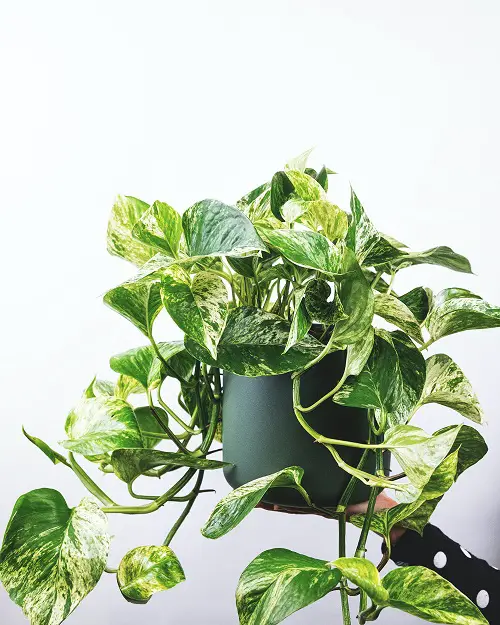
The easiest plant to grow, Pothos is considered to be an excellent oxygen exhaler at night as well as during daytime while cleaning formaldehyde from the air at the same time. It’s a trailing vine plant with a heart-shaped marbled leaf that is not soil-dependent and can thrive well in soil or water only.
This plant is so adaptable that it can thrive well in indirect light. In fact, direct sunlight can scorch up the leaves. Pothos is a fast grower as compared to the majority of other house plants. It can grow up to 20 to 40 feet high when given ideal conditions. Pothos are toxic to both humans and animals. So place them at a spot where they’re unreachable. Don’t forget to wear gloves while handling them as they can cause the skin to rash.
Did You Know? Pothos are called devil’s ivy because it is simply impossible to kill the plant and it can survive even if kept in complete dark.
If you want to bring a relaxing effect to your space, here’s a complete tutorial on how to grow and propagate Pothos plants.
Aglaonema
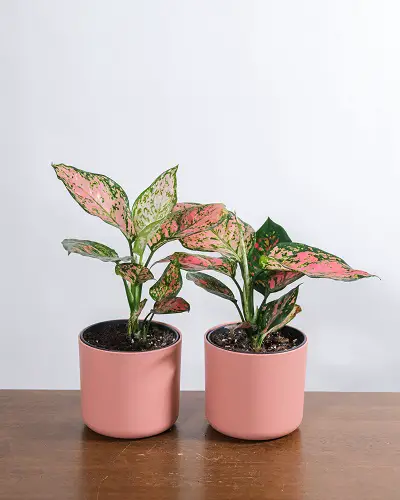
Aglaonema is also called a Chinese evergreen indoor plant. Because of its smaller size, this plant is a good option to keep in small spaces. Because a mature plant only grows to be 1 to 2 feet tall and wide, it is regarded as a compact plant. Admired for its vibrant colors and intriguingly patterned leaves ranging from pink, red, silver, yellow to spots and gradients.
It needs little to less light to thrive and for watering, avoid making the soil dry. If your plant is dehydrated, the leaves will start drooping. But the good news is they will bounce back when watered again. Fertilize the plant in spring and convert it into a bigger pot if it becomes overcrowded but only in spring or summer. Because this plant is toxic to both animals and humans, it should not be kept in a home with pets unless it is placed in an unreachable spot.
Since the dilemma of which plant to keep at home that requires less light is sorted for you, it is time to pick your favorite from the list and add it to your green collection. Or even if you are a newbie to the plant world, this article will help your clear out the confusion and motivate you to keep one at your place!

